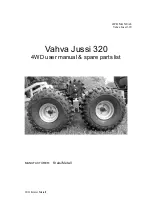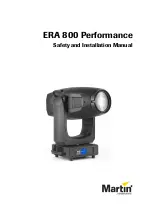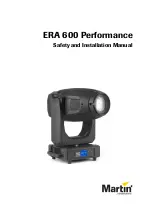
NB-IoT Multi-Evaluation Measurement
R&S
®
CMW-KM300/-KS300
228
User Manual 1178.5689.02 ─ 06
Remote command:
CONFigure:NIOT:MEAS<i>:RFSettings:EATTenuation
(SA)
CONFigure:NIOT:SIGN<i>:RFSettings:EATTenuation:INPut
(CSP)
Band / Channel / Frequency
Center frequency of the RF analyzer. Set this frequency to the frequency of the mea-
sured RF signal to obtain a meaningful measurement result. The relation between
operating band, frequency and channel number is defined by 3GPP (see
ter 3.2.6.3, "Frequency Bands"
You can specify the RF frequency in two ways:
●
Enter the frequency directly. The band and channel settings can be ignored or used
for validation of the entered frequency. For validation, select the designated band.
The channel number resulting from the selected band and frequency is displayed.
For an invalid combination, no channel number is displayed.
●
Select a band and enter a channel number valid for this band. The measurement
calculates the resulting frequency.
In the standalone (SA) scenario, these parameters are controlled by the measurement.
In the combined signal path (CSP) scenario, they are controlled by the signaling appli-
cation. In the guard-band operation mode and the in-band operation mode, there are
channel raster offsets added to the configured RF frequencies. The offsets are only
displayed in the GUI of the signaling application.
Remote command:
(SA)
CONFigure:NIOT:MEAS<i>:RFSettings:FREQuency
(SA)
(CSP)
CONFigure:NIOT:SIGN<i>:RFSettings:CHANnel:UL
(CSP)
Frequency Offset
Positive or negative frequency offset to be added to the specified center frequency of
the RF analyzer.
In the standalone (SA) scenario, this parameter is controlled by the measurement. In
the combined signal path (CSP) scenario, it is controlled by the signaling application.
Remote command:
CONFigure:NIOT:MEAS<i>:RFSettings:FOFFset
(SA)
CONFigure:NIOT:SIGN<i>:RFSettings:FOFFset:UL
(CSP)
Expected Nominal Power
Defines the nominal power of the RF signal to be measured. An appropriate value for
NB-IoT signals is the peak output power at the DUT during the measurement. The
"Ref. Level" is calculated as follows:
Reference level = Expected Nominal Power + User Margin
Note:
The actual input power at the connectors must be within the level range of the
selected RF input connector; refer to the data sheet. If all power settings are config-
ured correctly, the actual power equals the "Reference Level" minus the "External
Attenuation (Input)" value.
In the standalone (SA) scenario, this parameter is controlled by the measurement. In
the combined signal path (CSP) scenario, it is controlled by the signaling application.
GUI Reference
深圳德标仪器
















































